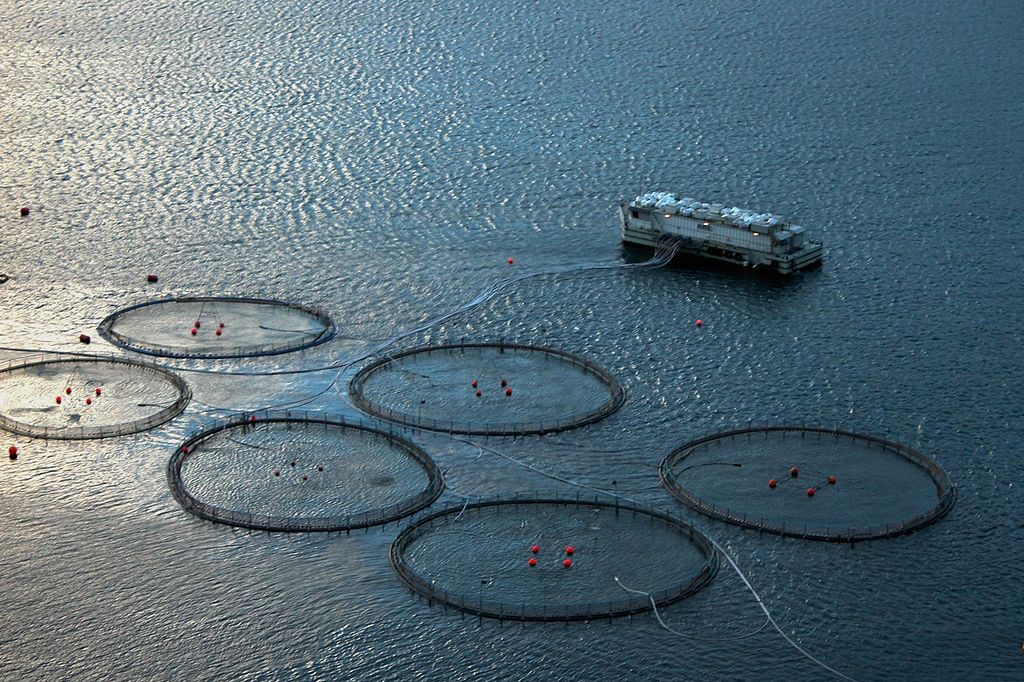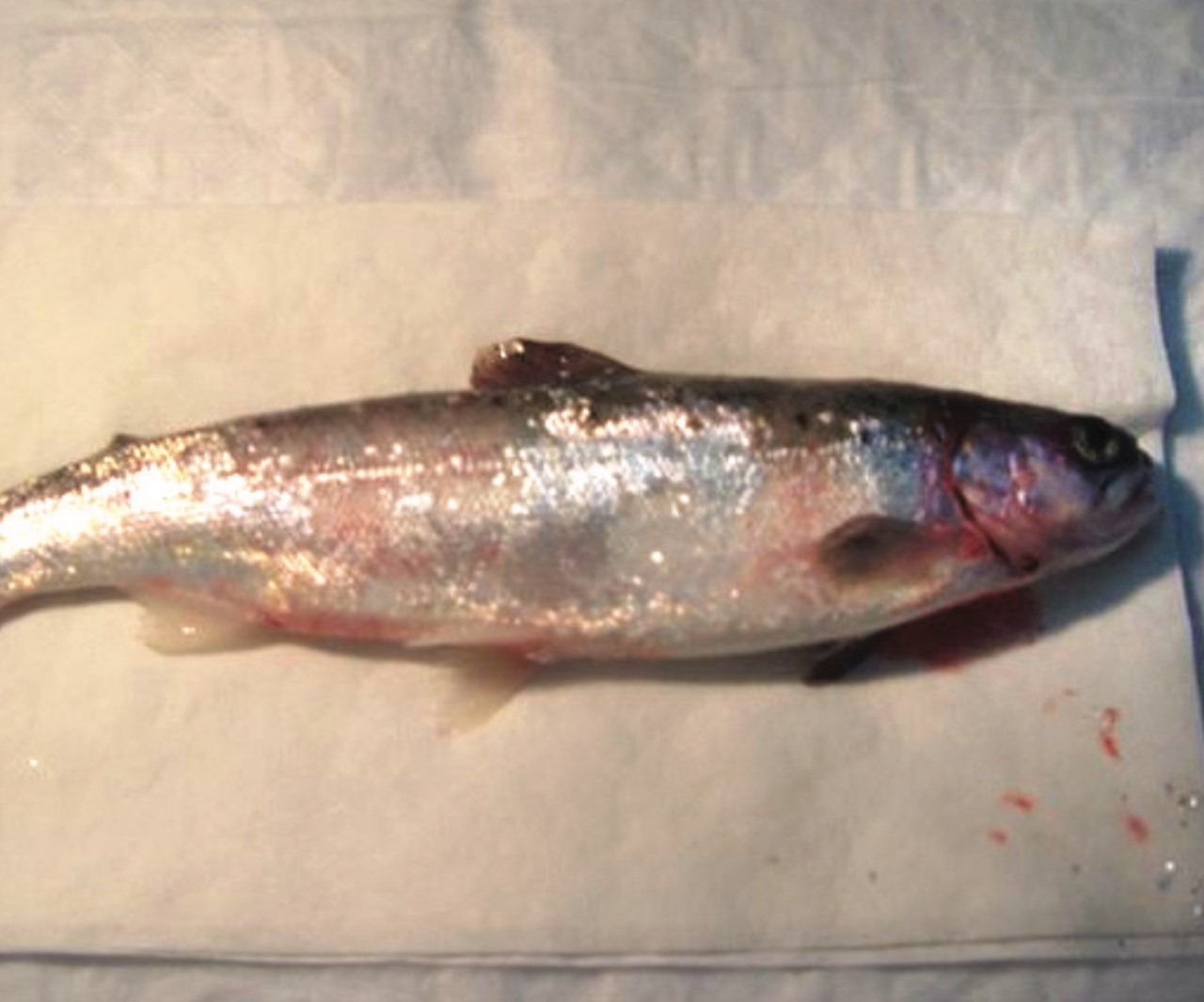Fish are Tested, Traced, and Quarantined, Too
ITHACA, NY – Mostly stuck at home like the rest of you, I cannot get the constant talk about testing and tracing out of my head during this COVID-19 pandemic. New York Governor Andrew Cuomo’s voice is ever present, and I welcome his daily, even-tempered and pragmatic broadcasts about how to keep us safe. Given my line of work, I easily saw some analogies, and I said to my work-at-home spouse on one of our daily walks, “Fish farmers have to deal with epidemics, too.” Fish are tested, traced, and isolated in their “homes” just like us humans. There are a lot of similarities. In this issue of Fish Farming News, I am writing about three of my favorite topics – emerging viruses, molecular diagnostic testing, and figuring out who infected whom.
Managing the health of a population is what farmers do, often with help from fish health experts. Outbreaks of disease come in various degrees of severity. Vaccines or management changes often prevent those infections caused by pathogens that are endemic in your location or growing conditions. For bacterial or parasitic outbreaks, drug treatments that reduce infection levels can have a beneficial effect of reducing burden on the farm and also prevent severe illness. New entities like emerging viruses from a different region of the world can cause more intractable problems like the situation we find ourselves in now. Those of you who have been around for a while will remember the appearance of diseases like infectious salmon anemia (ISA), pancreas disease, and koi herpes virus. A long list of shrimp viruses could be included here as well. Another emerging virus, called tilapia lake virus (TiLV), has caused a new disease on tilapia farms around the world.
Rapid detection and tracing is essential for the efficient and timely control of fish disease outbreaks. The sooner a new pathogen on the farm can be identified, the faster a team can be put together to fight it.
Early is better
Addressing sudden deviations in fish behavior, feed consumption, or mortality levels often involves testing. Testing can have obvious objectives like determining the cause of an outbreak. Telling the farmer which serotype or genotype of pathogen is present can be important as well. The quantitative molecular assays used for numerous fish pathogens (and the CoV-2 virus causing the present pandemic) provide identification and infectious load estimates that can predict how quickly the disease will spread. The diagnosis of RNA fish viruses IPNV, IHNV, VHSV, SVCV, and ISAV all rely on the same real-time PCR methods used to diagnose COVID-19. Comparing the nucleic acid sequences of these viruses allows fish health professionals to trace where they came from and often how to limit the spread.
Here in the states, USDA’s Animal and Plant Health Inspection Service (APHIS) has both the testing and tracing ability to protect the aquaculture industry from epidemics. The epidemiologists at APHIS are the brain trust behind the control and management of our country’s most severe disease outbreaks in all animal and plant species. APHIS covers animals while the Centers for Disease Control and Prevention (CDC) focuses on people.
Animal disease traceability or knowing where diseased and at-risk animals are, where they’ve been, and when, is important to ensuring a rapid response when animal disease events take place. Although animal disease traceability does not prevent disease, an efficient and accurate tracing system reduces the number of animals and response time involved in a disease investigation.
APHIS reduces the economic impact on owners and affected communities. APHIS issued a Federal Order to prevent the entry or introduction of TiLV into the United States in November 2019 because it posed a serious threat to U.S. aquaculture. This Order required that imported shipments of all live fish, fertilized eggs, and gametes from TiLV-susceptible species (only tilapines) now have a USDA import permit, official health certificate, and veterinary inspection. Instituting these new testing and permit requirements prevents the introduction of TiLV-infected young fingerling tilapia, fertilized eggs, and male gametes. Instead of keeping 6 feet away from our neighbor, this is analogous to preventing entry into the country without a Coronavirus (CoV-2) virus-free health certificate.
Distancing
Keeping tanks, raceways, and net-pens separated may seem impossible, but you can incorporate social distancing by restricting visitors to the farm or at least away from the more vulnerable younger life stages. There are more on-site precautions such as keeping workers well trained in biosecurity protocols to limit pathogen transmission like boot and net disinfection.
There is frequent discussion of how far aerosolized/droplet transmission of the CoV-2 will travel. It is not just tiny viruses that can travel through the air. Here at Cornell we have documented aerosolized transmission of fish pathogens Aeromonas salmonicida and Ichthyophthirius (Ich) from tank to tank. To mitigate the chances of resurgence of infection prolonged or intermittent periods of fallowing cage sites may be required. This form of distancing measures may need to last for months to effectively control transmission and mitigate the possibility of disease return.
The coordination of production and biosecurity practices across neighboring farms in a defined region is also an important disease prevention and control strategy in aquaculture. Successes in Infectious Salmon Anemia virus (ISAV) control have included area separation achieved through synchronized stocking, fallowing, movement restrictions, and fomite or pest control. This type of management comes with addition expense for extra biosecurity, lengthy or inconveniently timed fallows, and localized equipment, personnel, and services.
Outbreaks of ISA have impacted Atlantic salmon production in Norway, Scotland (and other parts of the UK), the Faroe Islands, Maritime Canada, the U.S. (Maine only), and Chile. Recurrent problems with ISA between 1999 and 2003 in Maine and Maritime Canada caused devastating economic losses to the industry in both countries. The ISA virus is the type species of the genus Isavirus, in the Orthomyxoviridae family, which also includes influenza viruses. While ISAV does not infect humans, it does mutate like the flu virus and needs to be monitored.
Surveillance
Another similarity to COVID-19 is that for some fish diseases that reoccur, such as ISA, widespread surveillance is needed. An ongoing surveillance program that allows early detection of both pathogen and disease is essential for the effective prevention, management, and control of a wide variety of aquatic diseases.
The salmon industry in Downeast Maine conducts scheduled ISAV surveillance, implements “social distancing” measures with fallowing when necessary, and assesses any possible resurgences of infection, which could occur even after prolonged periods of apparent elimination. Surveillance inspections consist of visual inspections by an accredited veterinarian of all net-pens on a site, review of weekly and/or most recent mortality figures, and collection of diagnostic samples for testing as described in the Maine Infectious Salmon Anemia Virus Control Program Standards (see pdf link below). The ISAV Control Program contains seven components: surveillance; laboratory testing; disease reporting; disease control and biosecurity; quarantine; depopulation; and indemnity (subject to availability of funding). Other related aspects include: the development of action plans; risk identification and mitigation; movement restrictions; selective depopulation; synchronized fallowing; overall management coordination; and shared communications among Atlantic salmon farming operations.
Dive deeper
For more information on the ISAV Control Program check out: https://www.aphis.usda.gov/animal_health/animal_dis_spec/aquaculture/downloads/isa_standards.pdf. These ISAV Standards outline recommended procedures for the prevention and containment of Infectious Salmon Anemia virus in farm-raised Atlantic salmon. The Standards provide guidelines for producers, APHIS-accredited veterinarians, other fish health personnel, laboratory personnel, and regulators.
I hope everyone is well and, as always, thanks for reading Fish Health Notes.
Dr. Rod Getchell works in the Aquatic Animal Health Program at the Cornell University College of Veterinary Medicine. Rod has a broad background in fish health, with specific training and expertise in conducting experimental trials with a variety of fish species. His current research focuses on emerging pathogens of fish, including rhabdoviruses.
Text and images originally published in Fish Farming News: Issue 3, 2020.



